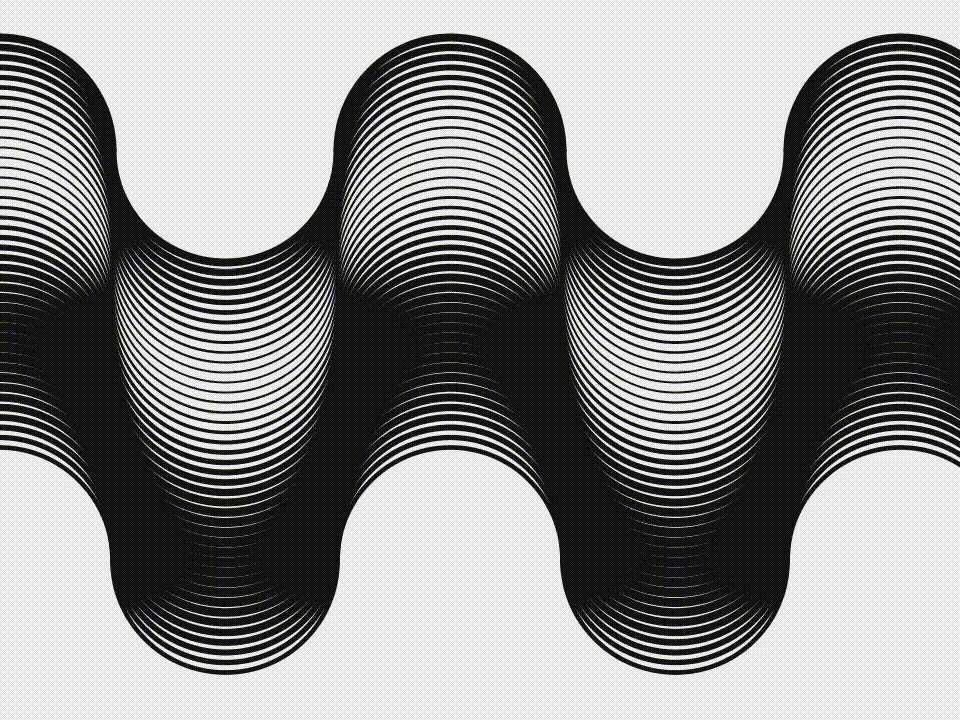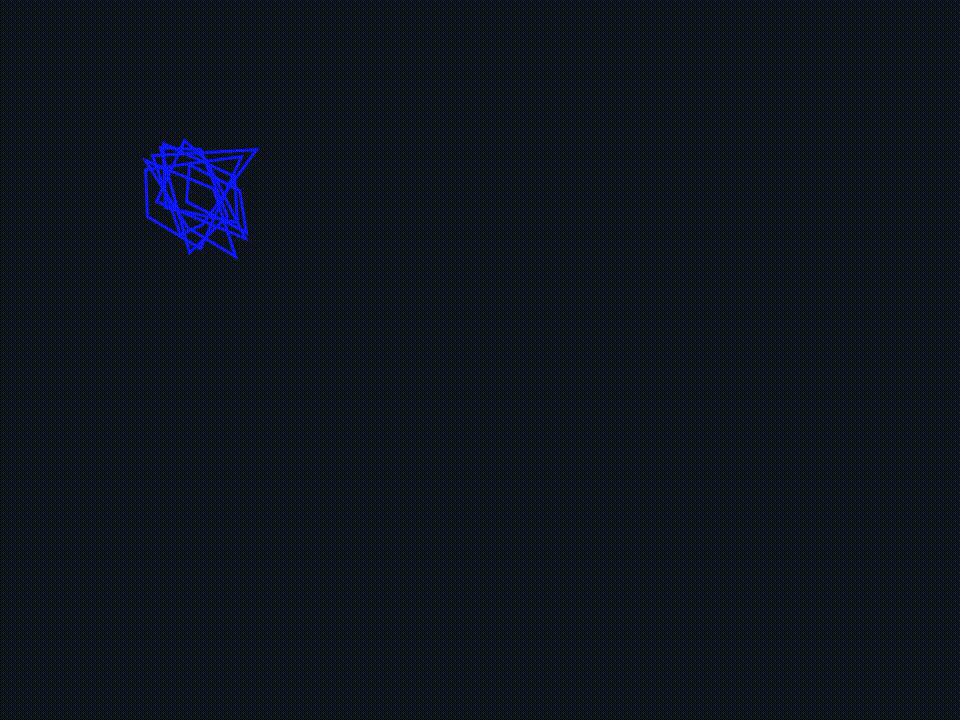
Generative Arts based on Processing Part1
First to mention, this part is purely based on tutorials of thedotisblack creative coding, and you can find many more interesting content in his channel.
Still, I made some customization to his design and here I will show my works based on him.
I want to say thank you to this youtuber, and he showed me unlimited potential of Processing.
Then, let’s move on to the works!
Curve with Oscillating Stroke Weight

Dynamic Vera Molnar Alogrithm

Effect Generated by Recursive Overlapping Rotating Squares
Crossing Rotation Systems
Corresponding Processing Code
Curve with Oscillating Stroke Weight
float sw, alpha;
float yStep = 10;
float arcSize = 450;
void setup() {
size(960, 720);
}
void draw() {
background(238);
mouseX = constrain(mouseX, 10, width);
mouseY = constrain(mouseY, 10, height);
noFill();
stroke(20);
for (float y = arcSize / 3; y < height - arcSize / 3; y += yStep) {
sw = map(sin(radians(y + alpha)), -1, 1, 2, yStep);
strokeWeight(sw);
for (float x1 = arcSize / 2; x1 < width + arcSize; x1 += arcSize) {
arc(x1, y, arcSize / 2, arcSize / 2, 0, PI);
}
sw = map(sin(radians(y - alpha)), -1, 1, 2, yStep);
strokeWeight(sw);
for (float x2 = 0; x2 < width + arcSize; x2 += arcSize) {
arc(x2, y, arcSize / 2, arcSize / 2, PI, TWO_PI);
}
}
alpha++;
}Dynamic Vera Molnar Alogrithm
color[] colArray = {color(255, 255, 255), color(200, 5, 20), color(55, 188, 25), color(15, 25, 250),
color(125, 235, 250), color(240, 245, 15), color(160, 60, 235)};
int grid = 100;
int margin = 100;
int squareCount = 2 * margin;
void setup() {
size(960, 720);
}
public void draw() {
background(15, 20, 30);
stroke(255);
float size = (float)(grid * 0.6);
for (int i = 2 *margin; i < width - margin && i <= squareCount; i += grid) {
for (int j = 2 * margin; j < height - margin && j <= squareCount; j += grid) {
int colArrayNum = (int)random(7);
stroke(colArray[colArrayNum]);
strokeWeight(3);
generateBlock(7, size, i, j);
}
}
delay((int)random(200, 500));
squareCount += grid;
squareCount = constrain(squareCount, 0, width);
}
public void generateBlock(int overLay, float size, int i, int j) {
for (int num = 0; num < overLay; num++) {
float x1 = -random(size); float y1 = -random(size);
float x2 = random(size); float y2 = -random(size);
float x3 = random(size); float y3 = random(size);
float x4 = -random(size); float y4 = random(size);
strokeWeight(3);
pushMatrix();
translate(i, j);
quad(x1, y1, x2, y2, x3, y3, x4, y4);
popMatrix();
}
}Effect Generated by Recursive Overlapping Rotating Squares
float angle;
float angle2 = 0;
public void settings() {
size(960, 720);
}
public void draw() {
background(0, 15, 30);
rectMode(CENTER);
stroke(0, 15, 30);
strokeWeight(25);
translate((float) width / 2, (float) height / 2);
float scaleVar = map(sin(radians(angle2)), -1, 1, 0.75, 5);
scale(scaleVar);
for (int i = 0; i < 150; i++) {
fill(i * 10, 255 - i * 25, 255 - i * 10);
scale((float) 0.95);
rotate(radians(angle));
rect(0, 0, 600, 600);
}
angle += 0.1;
angle2 += 1;
}Crossing Rotation Systems
float angle;
public void settings() {
size(960, 720);
}
public void draw() {
noStroke();
fill(color(0, 15, 30));
background(255);
float x = width;
float dia = 100;
int num = 150;
translate((float) width / 2, (float) height / 2);
for (float a = 0; a < 360; a += 22.5) {
rotate(radians(a));
pushMatrix();
for (int i = 0; i < num; i++) {
scale((float) 0.95);
rotate(radians(angle));
ellipse(x, 0, dia, dia);
}
popMatrix();
pushMatrix();
for (int i = 0; i < num; i++) {
scale((float) 0.95);
rotate(-radians(angle));
ellipse(x, 0, dia, dia);
}
popMatrix();
}
angle += 0.05;
}